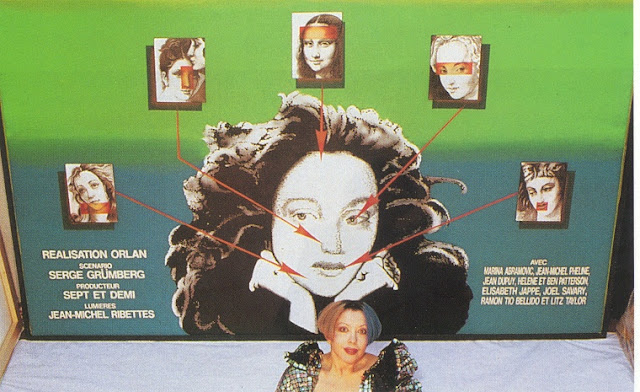Week 3 - Robotics + Art
This week’s topic is the close relationship between robotics and art which I find especially significant in the invention of the machines to create/spread art and the creation of scientific fictions.
In the modern society with the help of various forms of technologies, reproduction of artworks does not seem hard to us. However, in the early years, there were many obstacles on how to preserve and reproduce artworks. Thus, the revolutionary means of mechanical reproduction play a huge and important role in the world history.
On one hand, when artworks such as photography works can be reproduced as many times as we want, there is no point in looking for the original and authentic piece as they all are. That’s how art truly reacted with the doctrine of l’art pour l’art. His profound ideas of arts are even recently a hot topic among fashion designers.
On the other hand, while mechanic reproduction develops, the reaction of the masses towards art is changing at the same time as well according to Walter Benjamin. In his work The Work of Art in the Age of Mechanical Reproduction, he mentioned that “The conventional is uncritically enjoyed, and the truly new is criticized with aversion” which was obvious when people watch and criticize movies compared to them enjoying conventional paintings.
In addition to the reproduction of art, robotic characters in artworks are significant as well. As literature has such a close relationship with art, the robotic characters in scientific fictions are also adopted in art.
For example one of my favorite literature work Frankenstein has such a robotic character referred as the Monster by the author. This character is adopted by many artists in a great number of cartoons, movies, and television shows. Though the Monster was originally created by the author, artists play important roles in saturating the character.
And finally, here is a link of a video illustrating the combination of literature, art and technology if you are interested in Frankenstein's story.
For example one of my favorite literature work Frankenstein has such a robotic character referred as the Monster by the author. This character is adopted by many artists in a great number of cartoons, movies, and television shows. Though the Monster was originally created by the author, artists play important roles in saturating the character.
 |
| http://gallery.yopriceville.com/Free-Clipart-Pictures/Halloween-PNG-Pictures/Frankenstein_PNG_Clipart_Image#.WPvL6lLMwdU |
Sources:
Benjamin, Walter. The Work of Art in the Age of Mechanical Reproduction. PDF. Web.
“Video SparkNotes: Mary Shelley's Frankenstein summary”. Youtube, uploaded by VideoSparkNotes, 13 Oct. 2010. https://www.youtube.com/watch?v=XRppXdKDY_c.
"Frankenstein Summary." Shmoop. Shmoop University, Inc., 11 Nov. 2008. Web. 22 Apr. 2017.
Cochrane, Lauren. “Why it’s fashionable to quote Walter Benjamin”. The Guardian. 5 Feb. 2017. Web. 22 Apr. 2017.
“SparkNote on Frankenstein.” SparkNotes.com. SparkNotes LLC. 2007. Web. 17 Apr. 2017.




I really liked how you compared this topic to Frankenstein. Frankenstein was also a human-like creature meant to start another superior race, however, he becomes corrupt as his creator let go of his responsibilities of taking care of him. Like Brooks says in his Ted Talk, robots will soon invade our lives. There will be no use for humans anymore and they will start taking over the world.
ReplyDelete